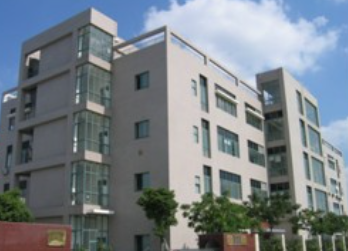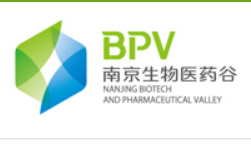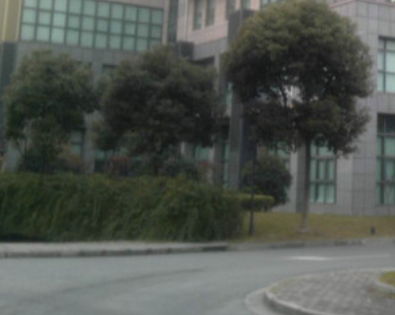

含有NH/OH/SH基团的底物在弱碱条件下,在空气中通过醋酸铜催化,与有机硼酸化合物氧化交叉偶联进行芳基,烯基和烷基化的反应。
常见的反应底物:酰胺,胺,脒,苯胺类,叠氮化物,唑类,乙内酰脲类,肼类,酰亚胺,亚胺,亚硝基化合物,吡嗪酮,嘌呤,嘧啶,磺酰胺类,亚磺酸胺,亚磺酰亚胺,脲,醇,酚,硫醇等等。硼酸也可以被其他活性化合物代替:硅氧烷,锡烷,和其他有机金属化合物。此反应比 Buchwald–Hartwig钯催化反应的优点就是条件比较温和,但是原料硼酸比Buchwald–Hartwig的原料芳卤要贵。
Chan–Lam C–X偶联反应在有机合成中与非常类似的 Suzuki–Miyaura’s C–C 交叉偶联反应一样应用非常广泛。
反应机理

硼酸和催化剂进行络合,金属转移(不可逆过程),二价铜络合物被氧化为三价铜络合物,与胺反应还原消除得到产物,生成的一价铜被氧气氧化完成催化剂循环。
反应实例



参考文献
1. (a) Chan, D. M. T.; Monaco, K. L.; Wang, R.-P.; Winters, M. P. Tetrahe
dron Lett. 1998, 39, 2933-2936. (b) Lam, P. Y. S.; Clark, C. G.; Saubern, S.;
Adams, J.; Winters, M. P.; Chan, D. M. T.; Combs, A. Tet rahedron Lett. 1998,
39, 2941-2949. Dominic Chan is a chemist at DuPont Crop Protection, Wilming
ton, DE, USA. He did his PhD research with Prof. Barry Trost at the University
of Wisconson, Madison. Patrick Lam is a research director at Bristol–Myers
Squibb, Princeton, NJ, USA. He was formerly with DuPont Pharmaceuticals
Company. He did his PhD research with Prof. Louis Friedrich in the Univeristy of
Rochester and Post-doc research with Prof. Michael Jung and the late Prof. Don
ald Cram in UCLA. (c) Evans, D. A.; Katz, J. L.; West, T. R. Tetrahedron Lett.
1998, 39, 2937-2940. Prof. Evans’ group found out about the discovery of this
reaction on a National Organic Symposium poster and be came interested in the
O-arylation because of his long interest in vancomycin total synthesis. (d) Lam, P.
Y. S.; Clark, C. G.; Saubern, S.; Adams, J.; Averill, K. M.; Chan, D. M. T.; Combs, A. Synlett 2000, 674676. (e) Lam, P. Y. S.; Bonne, D.; Vincent, G.; Clark, C. G.; Combs, A. P. Tetrahedron Lett. 2003, 44, 1691-1694.
2. Reviews: (a) Qiao, J. X.; Lam, P. Y. S. Syn. 2011, 829-856; (b) Chan, D. M. T.;
Lam, P. Y. S., Book chapter in Boronic Acids Hall, ed. 2005, Wiley–VCH, 205–
240. (c) Ley, S. V.; Thomas, A. W. Angew. Chem., Int. Ed. Engl. 2003, 42, 5400–
5449.
3. Catalytic copper: (a) Lam, P. Y. S.; Vincent, G.; Clark, C. G.; Deudon, S.;
Jadhav, P. K. Tetrahedron Lett. 2001, 42, 3415-3418. (b) Antilla, J. C.; Buch
wald, S. L. Org. Lett. 2001, 3, 2077-2079. (c) Quach, T. D.; Batey, R. A. Org.
Lett. 2003, 5, 4397-4400. (d) Collman, J. P.; Zhong, M. Org. Lett. 2000, 2,
1233-1236. (e) Lan, J.-B.; Zhang, G.-L.; Yu, X.-Q.; You, J.-S.; Chen, L.; Yan,
M.; Xie, R.-G. Synlett 2004, 1095-1097.
4. Mechanism (Part of the mechanistic work from Shannon’s lab was funded and in collaboration with BMS: (a) Huffman, L. M.; Stahl, S. S. J. Am. Chem. Soc. 2008, 130, 91969197. (b) King, A. E.; Brunold, T. C.; Stahl, S. S. J. Am. Chem. Soc.
2009, 131, 5044. (c) King, A. E.; Huffman, L. M.; Casitas, A.; Costas, M.; Ribas,
X.; Stahl, S. S. J. Am. Chem. Soc. 2010, 132, 1206812073. (d) Casita, A.; King,
A. E.; Prella, T.; Costas, M.; Stahl, S. S.; Ribas, X. J. Chem. Sci. 2010, 1, 326-330.
5. Vinyl boronic acids: Lam, P. Y. S.; Vincent, G.; Bonne, D.; Clark, C. G. Tetrahe
dron Lett. 2003, 44, 4927-4931.
6. Intramolecular: Decicco, C. P.; Song, Y.; Evans, D.A. Org. Lett. 2001, 3, 1029-1032.
7. Solid phase: (a) Combs, A. P.; Saubern, S.; Rafalski, M.; Lam, P. Y. S. Tetrahedron Lett. 1999, 40, 16231626. (b) Combs, A. P.; Tadesse, S.; Rafalski, M.;
Haque, T. S.; Lam, P. Y. S. J. Comb. Chem. 2002, 4, 179-182.
8. Boronates/borates: (a) Chan, D. M. T.; Monaco, K. L.; Li, R.; Bonne, D.; Clark,
C. G.; Lam, P. Y. S. Tetrahedron Lett. 2003, 44, 38633865. (b) Yu, X. Q.; Yamamoto, Y.; Miyuara, N. Chem. Asian J. 2008, 3, 1517-1522.
9. Siloxanes: (a) Lam, P. Y. S.; Deudon, S.; Averill, K. M.; Li, R.; He, M. Y.; DeShong, P.; Clark, C. G. J. Am. Chem. Soc. 2000, 122, 76007601. (b) Lam, P.
Y. S.; Deudon, S.; Hauptman, E.; Clark, C. G. Tetrahedron Lett. 2001, 42, 2427-2429.
10. Stannanes: Lam, P. Y. S.; Vincent, G.; Bonne, D.; Clark, C. G. Tetrahedron Lett. 2002, 43, 3091-3094.
11. Thiols: (a) Herradura, P. S.; Pendora, K. A.; Guy, R. K. Org. Lett. 2000, 2,
20192022. (b) Savarin, C.; Srogl, J.; Liebeskind, L. S. . Org. Lett. 2002, 4, 4309-4312. (c) Xu, H.-J.; Zhao, Y.-Q.; Feng, T.; Feng, Y.-S. J. Org.Chem. 2012, 77, 2878-2884.
12. Sulfinates: (a) Beaulieu, C.; Guay. D.; Wang, C.; Evans, D. A. Tetrahedron Lett. 2004, 45, 32333236. (b) Huang, H.; Batey, R. A. Tetrahedron. 2007, 63, 7667-7672. (c) Kar, A.; Sayyed, L.A.; Lo, W.F.; Kaiser, H.M.; Beller, M.; Tse,M. K. Org. Lett. 2007, 9, 3405-3408.
13. Sulfoximines: Moessner, C.; Bolm, C. Org. Lett. 2005, 7, 2667-2669.
14. β-Lactam: Wang, W.; et al. Bio. Med. Chem. Lett. 2008, 18, 1939-1944.
15. Cyclopropyl boronic acid: Tsuritani, T.; Strotman, N. A.; Yamamoto, Y.; Kawa
saki, M.; Yasuda, N.; Mase, T. Org. Lett. 2008, 10, 1653-1655.
16. Alcohols: Quach, T. D.; Batey, R. A. Org. Lett. 2003, 5, 13811384.
17. Fluorides: (a) Ye, Y.; Sanford, M. S. J. Am. Chem. Soc. 2013, 135, 4648-4651.(b) Fier, P. S.; Luo, J.; Hartwig, J. F. J. Am. Chem. Soc. 2013, 135, 2552-2559.
编译自:J.J. Li, Name Reactions: A Collection of Detailed Mechanisms and Synthetic Applications, Chan–Lam C–X coupling reaction,page 125-127.







